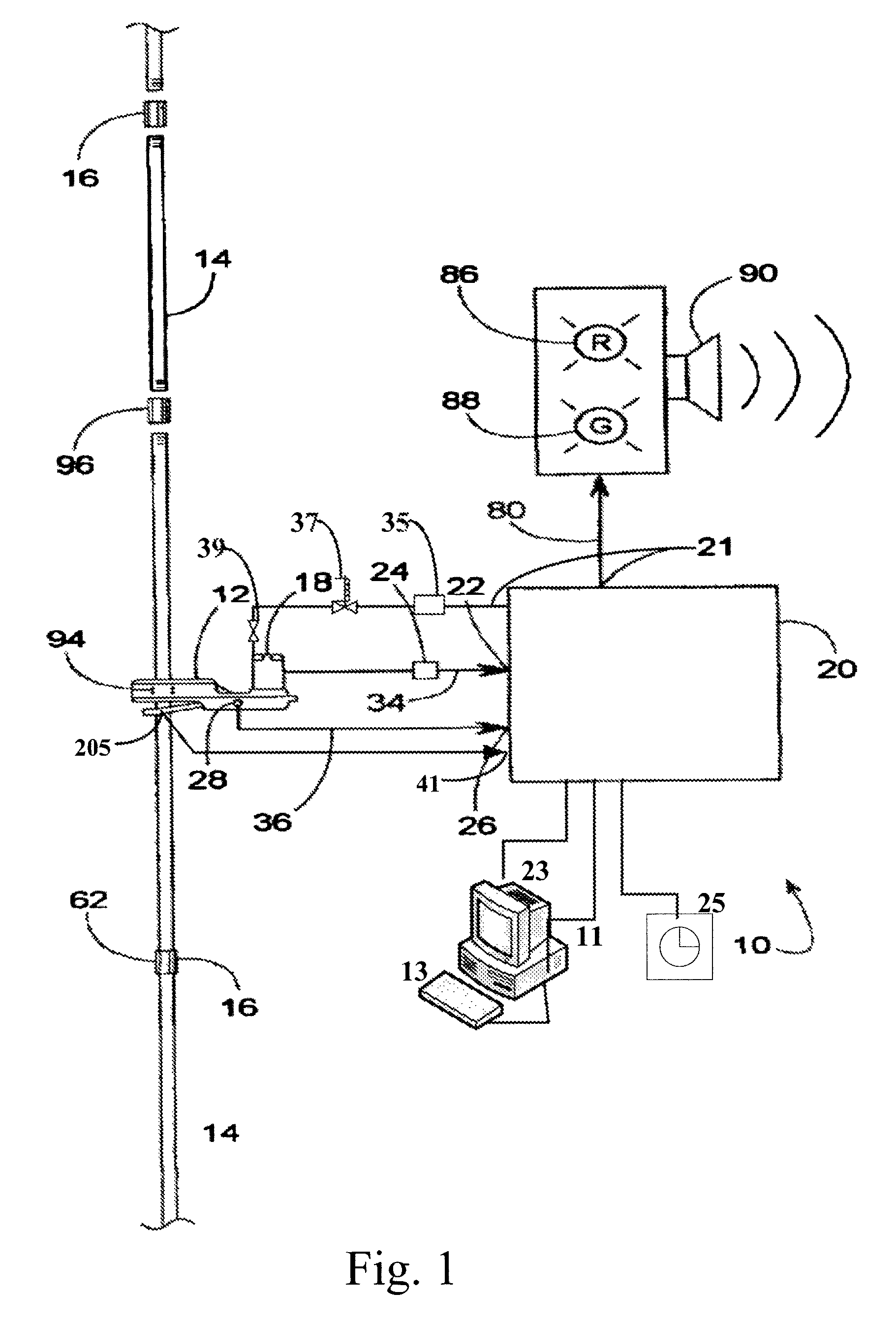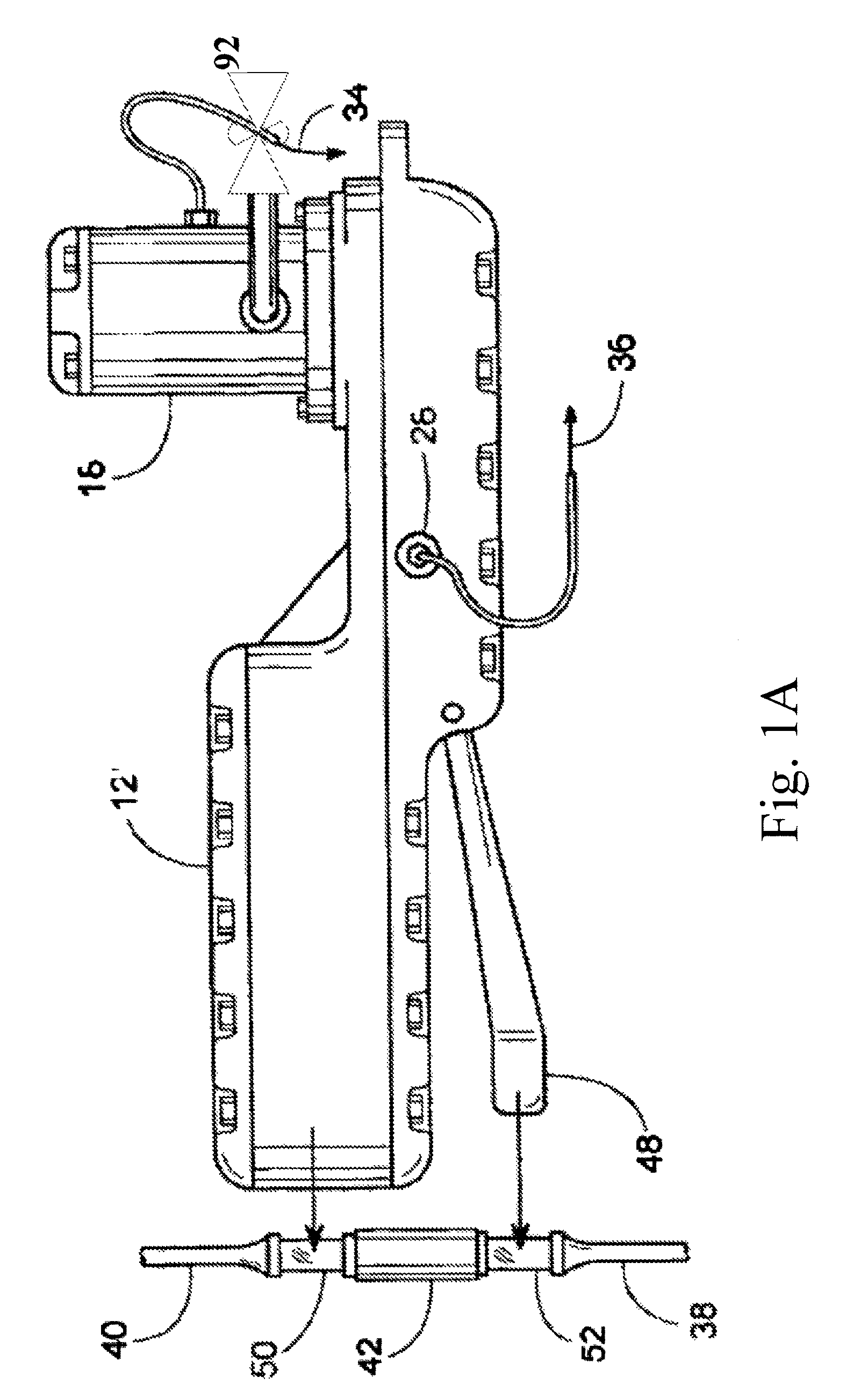Method and system for monitoring the efficiency and health of a hydraulically driven system
a technology of hydraulic drive and efficiency monitoring, which is applied in the direction of seismology, instruments, nuclear elements, etc., can solve the problems of reducing the ability of tongs of the same make and model to react consistently, difficulty in consistently achieving properly tightened joints, and affecting the efficiency of hydraulic drive systems
- Summary
- Abstract
- Description
- Claims
- Application Information
AI Technical Summary
Problems solved by technology
Method used
Image
Examples
Embodiment Construction
[0026]The present invention supports a tongs-based system and methods for monitoring operational aspects of a set of tongs during make-up and breakout to identify efficiency losses prior to a system failure. The present invention further supports modifying operational aspects based on temperature variables during a make-up or breakout process for rods and other elongated members, such at tubulars and other oil well equipment having threaded connections. Exemplary embodiments of the present invention can be more readily understood by reference to the accompanying figures. While the exemplary embodiments described in the figures will be discussed with referent to a make-up process, the same or substantially similar methods could be used to evaluate system performance and modify operational aspects during a breakout process for rods and other elongated members, and such breakout processes are within the scope and spirit of the present invention. The detailed description that follows is...
PUM
 Login to View More
Login to View More Abstract
Description
Claims
Application Information
 Login to View More
Login to View More - R&D
- Intellectual Property
- Life Sciences
- Materials
- Tech Scout
- Unparalleled Data Quality
- Higher Quality Content
- 60% Fewer Hallucinations
Browse by: Latest US Patents, China's latest patents, Technical Efficacy Thesaurus, Application Domain, Technology Topic, Popular Technical Reports.
© 2025 PatSnap. All rights reserved.Legal|Privacy policy|Modern Slavery Act Transparency Statement|Sitemap|About US| Contact US: help@patsnap.com



